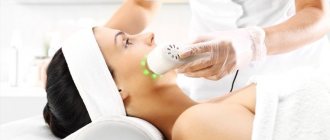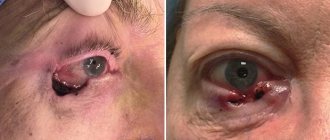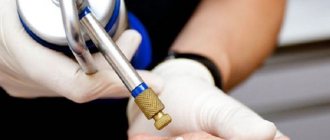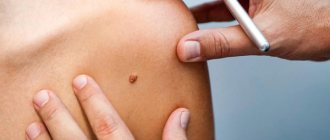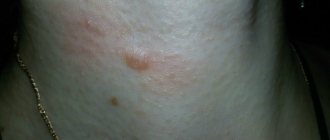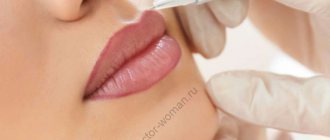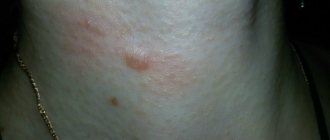Lasers are used in many areas of surgery, including the removal of skin tumors. Laser destruction has become an effective and reliable way to get rid of a tumor, without the risk of relapse of the disease and severe pain. Thanks to the targeted action, the laser beam acts selectively, namely on tumor cells, without affecting healthy tissue.
Warts, or nevi as they are called, are a cluster of pigmented cells that can be located on any part of the body and mucous membranes.
What is the essence of the method?
A directed laser beam increases the temperature in tissue cells and causes their destruction, resulting in tissue necrosis and death. The doctor can adjust the wavelength and degree of impact, so the laser action is directed only at the tissue of the formation, without affecting or injuring healthy tissue. Due to the high temperature, nearby vessels coagulate and the risk of bleeding is minimal. After the procedure, a small wound remains, then a crust forms, which disappears after a week on its own.
Prevention of the formation of warts and their cancerous degeneration
- To reduce the risk of infection, dampness should be avoided - since dampness is considered the most favorable environment for the spread of warts;
- You should be careful about cuts and scratches and take care of them. They can also cause warts - the wart virus penetrates into cuts and scratches very quickly. If you have a wart and you have it in one place, it may well happen that its particles have already got into some kind of scratch, and another one begins to grow there;
- Don't touch the warts. After all, the wart virus can be transmitted not only to other people, but also to oneself, since the virus can enter the body through damage to the skin - cuts, scratches or hangnails. Accidentally damaging a wart can also cause the infection to spread.
The period after infection during which the wart appears can vary from 1 to 6 months. At first, the wart is very small - and you cannot immediately notice it and understand that it is a wart.
Preparation for the procedure
Before laser removal, a thorough examination and examination of the tumor is carried out to ensure its benign nature. If the tumor contains malignant cells, the laser cannot be used. Wart removal will be carried out using a classic operation with removal of the tumor and part of the healthy tissue. Laser surgery is not performed if during the operation it is necessary to take biological material for subsequent research.
In addition to examining the mole, the doctor surveys the patient about possible contraindications to the procedure, and also conducts a number of studies (blood tests).
Routes of infection with human papillomavirus, which causes the development of warts
The virus can reach a healthy person through direct contact - a handshake, for example, or through infected objects: toys, handrails on public transport. Two to three hours of virus life in the external environment is enough for someone to become infected with warts: the infection is quite common.
Cosmetic defect is the main complaint of patients with warts. There is usually no pain. Moreover, many medical procedures, such as cryodestruction, cause more suffering than the warts themselves.
Post-procedure care
For a quick and complete recovery, high-quality postoperative care is necessary.
- The wound after surgery should not come into contact with water for at least 2-3 days.
- Do not remove the crust that has formed (it will fall off on its own).
- Treat the wound with an antiseptic.
- Protect the manipulation site from injury.
- Wounds and new skin formed must be protected from ultraviolet radiation.
- The surgical area should not be shaved or epilated until complete healing.
Prevention of warts
• Strict adherence to personal hygiene rules.
After visiting public places, wash your hands with soap. • If wounds or cuts occur on the skin, treat them with an alcohol solution, iodine or brilliant green. • When working with cleaning products or skin-damaging factors, use gloves. • Wear shoes made of genuine leather or fabric, avoid wearing synthetic shoes, especially for children and adolescents. • Normalize your diet, eat foods rich in vitamins. Avoid stress, organize your life. • When in contact with a person who already has warts, it is necessary to follow the rules of personal hygiene - wash your hands often with soap, limit the use of shared objects. [/td]
Benefits of laser wart removal
Laser removal has many advantages:
- High quality result. During surgery, the tumor is completely removed, there is no risk of relapse.
- Pain and discomfort are minimal or absent. The procedure is performed under local anesthesia.
- Speed of the procedure. Laser destruction of a wart takes no more than 5 minutes.
- Minimally traumatic procedure. The laser beam acts only on the cells of the formation, without affecting nearby tissues.
- Excellent cosmetic effect. After laser removal there are no scars or marks left.
- Versatility. Due to the precision of the laser, this method can be used on any part of the body, including areas with thin and sensitive skin, mucous membranes, intimate area, eyelid skin, etc.
- There is no rehabilitation period. The procedure is performed on an outpatient basis, after which you can lead your normal lifestyle.
- Minimal risk of postoperative bleeding. The action of the laser coagulates blood vessels, which eliminates the risk of bleeding.
Laser removal of tumors. How to properly care for your skin after the procedure?
The patient must understand that after surgery, the skin at the removal site may change noticeably.
Stages of wound healing:
- 1 Week
At the site where the papilloma was removed, an open small wound will first appear, which will quickly become covered with a thin crust. There is no need to peel off the crust, as it protects against infection from entering an open wound. It is necessary to protect the place where the wound is located from damage and injury. Do not rub the affected area with a washcloth. Do not scratch the damaged area under any circumstances.
According to the recommendations of a specialist, you can treat the wound with disinfectants.
- 2 week
Literally after 10 days the crust will disappear, and a barely noticeable scar will form in its place. Don't be afraid that this scar will stay with you forever! It will disappear over time, and the skin on the operated area will completely recover.
- 3 week
During this period of time, healthy skin develops at the site of the wound, which is able to independently withstand ultraviolet rays and other factors.
Once the wound where there was previously a tumor has completely healed, no further special care is needed.
If you suddenly feel itching at the operated site (after 20 days), but the skin looks normal, without redness and inflammation, you can use an ointment with a soothing effect.
By the end of the month after the procedure, the dimple from the removed tumor is smoothed out. At 3 months, a barely noticeable trace of the operation remains on the skin.
The healing process takes two to four weeks. The period will depend on the area occupied by the removed tumor. The larger the area of removal, the longer the process of tissue regeneration in the damaged area will be.
Let's move on to the issue of proper care after removal of tumors, so that this leads to a rapid healing process and regeneration of the skin without negative consequences.
To do this, consider a few rules that should be followed:
- For the first few days, do not wet the wound where there was previously a tumor.
- After laser removal, the skin should not be exposed to ultraviolet rays. You should avoid visiting the solarium and staying in the sun for long periods of time. Neglecting this rule can result in scar pigmentation.
- You should use sunscreen for a month after the procedure.
- It is worth giving up scrubs, lotions and tonics if you have removed a mole on your face. It will also be undesirable to use foundation and cosmetics for 2 weeks after the procedure.
- It is forbidden to drink alcohol during the week, as it causes blood vessels to dilate, which can cause bleeding;
- Do not allow household chemicals to come into contact with the operated area.
- It is not recommended to visit saunas and swimming pools for the first couple of weeks to reduce the risk of infection in the place where the tumor was;
- If the tumor has been removed in the genital area, you need to avoid intimacy for a while.
If you adhere to the simplest rules, the recovery process will be rapid and without unpleasant consequences.
Important! If, a couple of days after the laser tumor removal procedure, swelling or bleeding is observed in the wound area, you should immediately consult your doctor, since these symptoms may indicate the development of an infection.
Contraindications for laser removal
Laser procedures are not performed under the following conditions:
- oncological diseases of any localization;
- HIV, MSID, viral hepatitis, diabetes mellitus;
- pregnancy and lactation;
- exacerbation of chronic diseases;
- infectious or inflammatory diseases;
- mental disorders;
- severe damage to the heart and lungs;
- organ failure;
- bleeding disorders;
- skin photosensitivity;
- autoimmune systemic diseases;
- inflammatory skin diseases, exacerbation of herpes infection.
If you need to diagnose or remove a wart, contact a medical professional. The operations are carried out at a high professional level using modern laser technology of the latest generation, which eliminates the risk of complications or relapse. Laser removal of warts is carried out at any convenient time on an outpatient basis, which will not affect your usual lifestyle. You can make an appointment by calling the center or leaving a request on the website.
Clinical picture of warts
Externally, warts are dense nodules with a diameter of 1 to 10 mm (sometimes more), round or polycyclic in shape. Their surface is covered with cracks, horny layers, and vegetations. The color of warts often does not differ from the healthy skin surrounding them, but under a magnifying glass you can see black-brown dots, which are capillaries filled with blood clots.
The rash can be represented by either one element or multiple, randomly located isolated nodules. After a wart is removed, new ones (daughter ones) may appear around it, arranged in a circle. Warts are localized in easily injured areas: hands, fingers, knees. Localization of warts on the fingers and palms leads to changes in the skin pattern. In this situation, the recovery of fingerprints is a sign of recovery.
There are several types of warts.
Common warts
Dense, dry, limited, painless keratinized elevations with an uneven villous surface, the size of a pinhead to a pea. They can merge to form large plaques. Most often located on the hands.
Plantar warts
They are a type of common warts - they appear in places where shoe pressure is applied, especially in those who sweat a lot. Very dense, keratinized, gray-dirty plantar warts are characterized by severe pain that prevents walking; sometimes cause temporary disability.
Flat or juvenile warts
They usually occur in children and young people. They look like round or irregularly shaped flat nodules that are located on the back of the hands, as well as on the skin of the face. The appearance of flat warts is promoted by skin irritation (they often occur along the course of scratches, cuts, etc.).
How long does it take for a wound to heal after laser removal of a wart?
After laser removal of a small wart, the wound usually heals within 5-7 days. If the diameter of the formation is from 1 cm, then the process lasts for 3-4 weeks. A longer period is possible with:
- non-compliance with the rules of treatment with drying agents;
- frequent getting wet;
- friction with clothing, injury;
- diseases – low immunity, diabetes, circulatory disorders;
- bad habits – smoking, alcohol abuse;
- poor nutrition – lack of protein (meat, fish, cottage cheese, cheese), vitamins (rose hips, black currants, fresh herbs).
Is further treatment required after genital wart removal?
Yes, it is required. This is due to the prevention of recurrent manifestations of HPV (human papillomavirus). First of all, it is recommended to use drugs that stimulate the body's protective functions. This will help avoid relapse.
In addition, after removing condylomas, it is necessary to adhere to a certain regime and use special means:
• use immunostimulants;
• try to avoid chronic fatigue;
• avoid vitamin deficiency (take vitamin complexes, fresh fruits and vegetables);
• use local antiviral drugs (ointments, gels, sprays);
• beware of hypothermia;
• use condoms, since there are a number of HPV viruses with a high risk of complications - 35, 33, 31, 18 and 16;
• avoid emotional stress.
